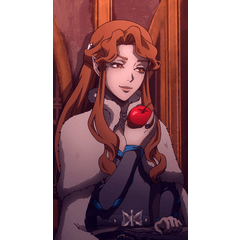What makes a room look cozy? (Isometric version)
Introduction
Hi there! Welcome to another tutorial
Before starting any work, let's do some research
What makes a room look cozy?
Is it colors? shapes? Objects? Coziness can mean different things for different people, maybe tidiness or a minimalist room is a cozy space for someone, and a very colorful space full of items is a comfortable space for someone else.
But there are some basic rules that can be used to our advantage. I gave it a lot of thought and decided on a few main elements
The cozy elements
Probably the first things you think about , warmth, comfortable, friendly
~ Warm colors - easy right? coziness is close to warmness
~ Round shapes ~ round table, round clock, round windows, any round objects. A round shape is usually a friendly-looking shape.
~ Unorganised space ~ or a bit of clutter, it can't hurt anyone right? Clutter usually means the space is used frequently by someone, therefore it can be a very personal and private space.
~ Organic shapes ~ think about plants, water waves, flowers, nature in general curves in different shapes. The chaotic movements look organic and flow to the shape
~ Warm materials ~ or materials that feel warmer to the touch such as wood, a cup of warm beverage, a heater, a fluffy blanket
The not so cozy elements
As a designer or artist, you can actually manipulate objects, colors, and shape to be to your advantage, so let's challenge ourselves and try the exact opposite.
Down below are what I considered to be hard choices in designing a cozy-looking room
~ Cold colors~ Let's try with darker cold colors. it already sounds very grim
(*you can use pastel cold colors and it will look way cozier - baby blue, pink, lilac etc)
~ Pointy shapes ~ like a square table, or windows or clocks. Squares, rectangles, triangles, and diamonds are shaped that are, how to say this, they might hurt you, so they look menacing because of the pointy aspect
~ Organized space ~ often you see a very clean and tidy place in an office or hotel room. At first glance, it gives you an impression that you are just a visitor and will leave soon
~ Geometric shapes - round, hexagon, and square are shapes made by the human hand. they look rigid and sturdy and they also need to look perfect otherwise any small imperfection will easily get noticed
~ Cold materials ~ stones, brick, marble, and concrete are very cold materials and perfect for this challenge. Any other material that inspires coldness can be a fan, a cold drink, maybe water
Let's start the drawing
I planned to make an isometric room, and I will work on both rooms at the same time, a warm room on the left, and a cold room on the right
I first start off with making a grid. This will be helpful in the long run
Im only using the lines and default shapes from the Clipstudio list
Next I started adding walls and floor.
Keep in mind wood is a warm material in comparison to brick or marble
You can already feel the difference in the material, right? Color helps of course, but the material impression is important too
I slowly start to add new elements
An organic shape for the warm room and a geometric bed design for the cold room
Circle shape window vs the square ones
Wood furniture with rounded corners for the warm room, and cold white pointy furniture for the colder room
Adding a fluffy carpet can help with the cozy feeling.
The shape does not affect too much, since its overlapping with the texture it emanates
Since we already made all the basic shapes, now we just need to add details
This is the fun part so just experiment with different objects and shapes
Aince its an isometric drawing you can flip the objects horizontally, and it will not affect the perspective
Books can also help with the mood
disorganised vs organised placement
Last but not least, plants
Plants are a great way to give life to an empty place
(you can also add a character or a pet)
Extra lights. Cozy room cannot be cozy if its missing lights
round one for the warm room, and pointy neon light for the cold room
Final touches
Dim the lights. Use a multiply layer on low opacity, and erase bits of it, you literally erase light. How fun is that?
Bonus: A quick way to make shadows is to merge every layer you need to, change the color to a darker one, and use gaussian blur to make it fuzzy. Then place it underneath the object
Thank you for visiting my page!
























Comentario